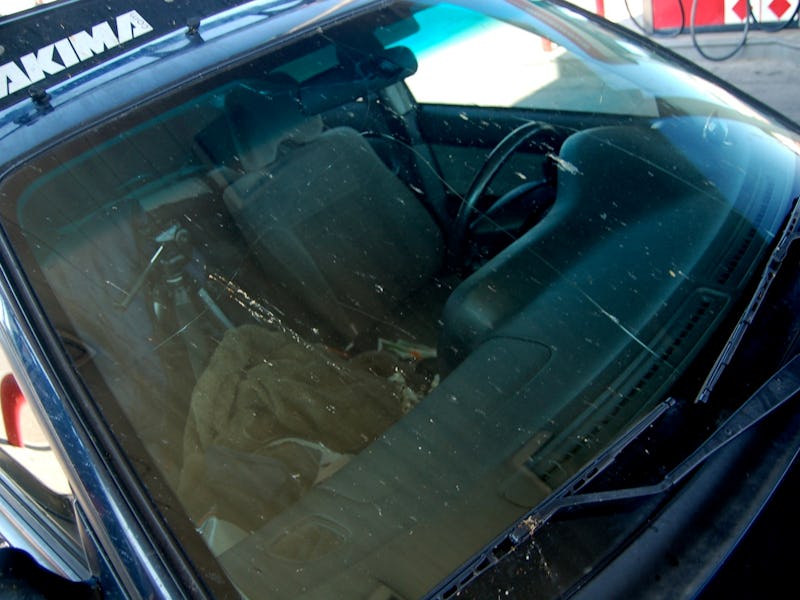Humans Are Killing All the Bugs and It's Time to Get Worried About It
From climate change to car windshields, it's a tough time to be a bug.

From the ravages of climate change to rapidly approaching car windshields, it’s a particularly difficult time to be a bug. It’s an easier phenomenon to miss in winter time, when many insects hibernate or migrate to escape the chillier temperatures. But then the summer rolls around, and we realize how much the environment has changed since our buggier childhoods.
“When I was a kid, going out for drives with my parents in the summer, you’d come home and your car would just be covered in insects,” Amanda Martin, a government research ecologist with Environment and Climate Change Canada, tells Inverse. “Now, when I go driving, I don’t see the same thing. You see a few insects on there but nowhere near as many as when I was a kid.”
It’s what Sussex University biologist Dave Goulson recently called an “ecological armageddon” in a Guardian piece — and the ramifications do indeed ripple out: Birds starve without enough bugs to eat. Cow patties linger in fields without dung beetles to break them down and recycle the nitrogen back into the soil. Humanity has pushed global insect populations to the brink of extinction via climate change and hazardous pesticides, of course, but also in another relatively unexamined way: We hit too many bugs with cars.
Some version of an anecdote like that is a pretty common feature of stories about the precipitous decline in insect populations, but Martin is possibly the first researcher to test the hypothesis that simply hitting bugs with cars is itself a significant part of the problem. Her results were published in May, in the journal Insect Conservation and Diversity.
“There’s upwards of 40 million kilometers of road lanes around the world and projections suggest we’re going to be getting more and more roads all the time,” Martin says. “People know that deer or moose are getting hit by cars — same with smaller animals like skunks and raccoons — but smaller animals are also being effected and this includes insects.”
Martin and her co-authors attached large sticky traps, like fly paper, to their test car and drove it along 10 high‐traffic and 10 low‐traffic rural roads in southeastern Ontario, in an effort to see whether or not the simple presence of more cars had been killing off more of the local winged-bug population. What they found was an average of 23.5-percent fewer smooshed-bugs-per-kilometer-traveled-per-car along those higher-traffic roads than the lower-traffic ones.
The team also selected their twenty rural roads to factor out contributing issues like road width (think, Frogger) and the urbanization of the nearby landscape, which could have been responsible for the reduced bug population all by itself due to light pollution upsetting the species behavior or reductions to other species the insects might thrive on. Zeroing out these variables led Martin’s team to conclude that this lower volume of insect roadkill might genuinely be attributable to increased road traffic in the area.
Granted, a lot of other human activities have been contributing to the major decline in bug populations worldwide: pesticides, like neonicotinoids, have seeped into the water supply decimating bee and wasp populations; random extreme weather events, due to climate change, have subjected many bugs to temperatures that they’re not evolved to handle; invasive species introduced as by-products of global trade have occasionally crowded out local insect species; and trends in big-time agribusiness and urban development frequently rob bugs of the local plant species that they have historically lived with in symbiosis.
“I can’t say for sure that this is a major contributing factor,” Martin says of the phenomena of cars hitting bugs. “That is definitely research that needs to be done still.”
While the true role of car windshields in this ecological crisis remains to be seen, Martin and her colleagues still shed light on how numerous and diffuse the causes of environmental disruption can be, and the often unwitting ways humans contribute the problem.